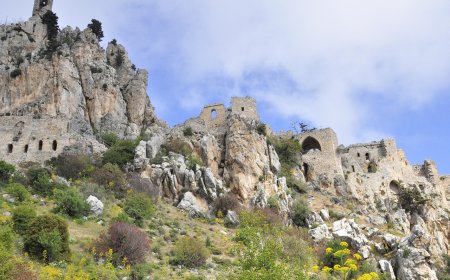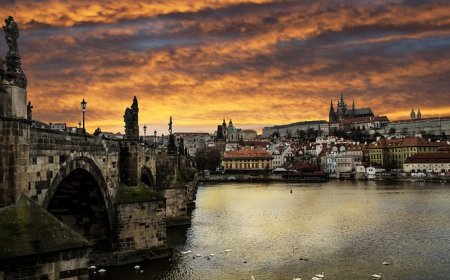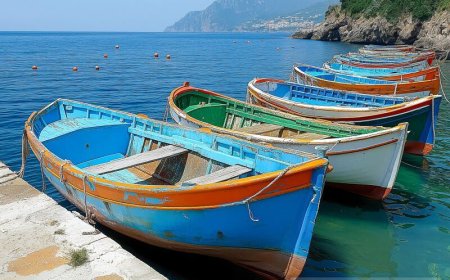Bulgaria for Students: Geography, History, and Culture
Explore Bulgaria’s mountains, traditions, cities, and history in this engaging article for students. Discover why Bulgaria is a cultural crossroads of Europe.
🇧🇬 Bulgaria: Mountains, Myths, and the Crossroads of Europe and Asia
SEO Title: Bulgaria for Students: Geography, History, and Culture
Meta Description: Explore Bulgaria’s mountains, traditions, cities, and history in this engaging article for students. Discover why Bulgaria is a cultural crossroads of Europe.
Slug: /countries/bulgaria
Keywords: Bulgaria for students, Sofia facts, Bulgarian culture and history, Balkan countries, Eastern Europe geography
🗺 Introduction
Bulgaria is a fascinating country in Southeastern Europe, where ancient history meets modern life, and mountains, monasteries, and folk dances shape everyday culture. Sitting at the crossroads of Europe and Asia, Bulgaria has seen Roman soldiers, Ottoman sultans, and Soviet leaders—but today it is an independent and proud nation in the European Union.
From snowy mountain peaks to sunny beaches along the Black Sea, Bulgaria offers a diverse mix of nature, cities, traditions, and languages. In this article, you’ll learn what makes Bulgaria so special, including its geography, culture, history, and people.
🌍 Geography and Location
Bulgaria borders Romania, Serbia, North Macedonia, Greece, Turkey, and the Black Sea. Its central position in the Balkans has made it an important cultural and trading hub for thousands of years.
The country’s land is incredibly diverse. It includes:
- The Balkan Mountains, which run east to west across the country
- The Rila Mountains, home to Mount Musala, the highest peak in the Balkans
- The Danube River, which forms the northern border with Romania
- Fertile valleys, forests, and the sunny beaches of the Black Sea coast
Bulgaria has a continental climate in the interior and a mild coastal climate by the sea. Winters are cold and snowy in the mountains, while summers can be warm and sunny along the coast.
🏙 Cities and Regions
The capital and largest city of Bulgaria is Sofia, located at the foot of Mount Vitosha. Sofia is one of Europe’s oldest capitals, with Roman ruins, Orthodox churches, and modern parks. Landmarks include the Alexander Nevsky Cathedral, the National Palace of Culture, and ancient Roman streets beneath the city.
Other key cities include:
- Plovdiv, one of the oldest cities in Europe, known for its Roman amphitheater and colorful houses
- Varna, a seaside city and major port on the Black Sea
- Burgas, a coastal city with beaches and bird sanctuaries
- Veliko Tarnovo, the medieval capital with fortress ruins and cobbled streets
Bulgaria is divided into 28 provinces, each with unique customs, dialects, and regional foods.
👨👩👧👦 People, Language, and Culture
Bulgaria has a population of around 6.5 million people. Most people are ethnic Bulgarians, and the official language is Bulgarian, a Slavic language written using the Cyrillic alphabet. Other communities include Turkish, Roma, and Armenian minorities.
Bulgarian culture is rich in folk music, dancing, storytelling, and colorful costumes. Traditional songs often feature complex rhythms, and dances like the horo are performed in a circle with quick, fancy footwork. These dances are still taught in schools and performed at weddings and festivals.
Bulgaria is also known for its contributions to Orthodox Christianity, including beautiful icons, churches, and monasteries. The Rila Monastery, a UNESCO World Heritage Site, is a symbol of Bulgarian identity and religion.
🍽 Food and Traditions
Bulgarian food combines Balkan, Turkish, and Mediterranean influences. It is healthy, full of vegetables, cheese, herbs, and grilled meats. Yogurt, called kiselo mlyako, is a national favorite, and many believe it’s one of the healthiest in the world.
Popular Bulgarian foods include:
- Banitsa, a flaky pastry filled with cheese and eggs
- Shopska salad, made with tomatoes, cucumbers, peppers, and white cheese
- Kebapche, a grilled meat sausage with spices
- Tarator, a cold cucumber yogurt soup served in summer
- Baklava, a sweet dessert with nuts and syrup
Holidays like Baba Marta Day (March 1st), Christmas, Easter, and Liberation Day (March 3rd) are full of folk traditions, red-and-white Martenitsa bracelets, and family feasts.
🏛 History of Bulgaria
Bulgaria’s story begins with the Thracians, an ancient people known for gold jewelry and mysterious tombs. Later, the region was conquered by Romans, and ruins from Roman cities still stand today.
In 681 AD, the First Bulgarian Empire was founded, making Bulgaria one of the oldest countries in Europe. It became a major cultural and political power. Later, the Second Bulgarian Empire flourished during the Middle Ages, with trade, art, and religion at its peak.
For nearly 500 years, Bulgaria was part of the Ottoman Empire, until it won its independence in 1878. In the 20th century, Bulgaria went through monarchy, communism, and finally, democracy after 1989.
Today, Bulgaria is a member of the European Union and NATO, with a growing economy and strong ties to both East and West.
🌿 Nature and Environment
Bulgaria’s natural beauty is one of its best features. National parks like Rila, Pirin, and Central Balkan protect mountains, forests, rivers, and rare species like brown bears, wolves, and golden eagles.
The Danube River and Black Sea coast support fishing, farming, and tourism. Bulgaria also has mineral springs, lakes, and hundreds of caves to explore.
Environmental groups and schools teach about forest protection, clean water, and wildlife conservation, especially in mountain areas.
📚 Vocabulary List
| Word | Definition |
|---|---|
| Balkan Mountains | A mountain range that crosses central Bulgaria from west to east |
| Cyrillic alphabet | The writing system used in Bulgarian and other Slavic languages |
| Martenitsa | Red-and-white bracelets given in March as a symbol of spring and health |
| Banitsa | A traditional pastry made with eggs, cheese, and flaky dough |
| Thracians | Ancient people who lived in the area of modern Bulgaria |
| Rila Monastery | A famous Orthodox Christian monastery and symbol of Bulgarian culture |
| Kebapche | A spicy grilled sausage popular in Bulgaria |
| Liberation Day | A national holiday on March 3rd marking Bulgaria’s freedom from Ottoman rule |
👧🧒 Kid-Friendly Summary
Bulgaria is a country in Europe with mountains, beaches, and traditions that go back thousands of years. People speak Bulgarian and use a different alphabet called Cyrillic. In spring, they wear red-and-white bracelets to welcome warmer weather. They love dancing, music, and eating tasty foods like cheesy banitsa and fresh salad.
Bulgaria has old castles, peaceful monasteries, and even bears living in its forests! It used to be ruled by empires but is now a free country that’s part of the European Union. Whether you want to ski, swim, or learn about legends, Bulgaria has something exciting to share.
🧠 Interactive Quiz: What Do You Know About Bulgaria?
1. What is the capital of Bulgaria?
A) Varna
B) Sofia
C) Bucharest
D) Athens
✅ Answer: B) Sofia
2. What mountain is the highest in Bulgaria and the Balkans?
A) Mount Olympus
B) Mount Vitosha
C) Mount Rila
D) Mount Musala
✅ Answer: D) Mount Musala
3. What is the Cyrillic alphabet used for?
A) Cooking
B) Writing Bulgarian
C) Playing music
D) Building houses
✅ Answer: B) Writing Bulgarian
4. What is a Martenitsa?
A) A soup
B) A bracelet for spring
C) A dance
D) A castle
✅ Answer: B) A bracelet for spring
5. Who were the ancient people of Bulgaria?
A) Romans
B) Gauls
C) Thracians
D) Huns
✅ Answer: C) Thracians
6. What is Rila Monastery?
A) A mountain peak
B) A city square
C) A famous monastery
D) A shopping center
✅ Answer: C) A famous monastery
7. What is Banitsa?
A) A mountain pass
B) A dance style
C) A pastry with eggs and cheese
D) A cold soup
✅ Answer: C) A pastry with eggs and cheese
8. What major body of water borders Bulgaria?
A) Red Sea
B) Adriatic Sea
C) Black Sea
D) Caspian Sea
✅ Answer: C) Black Sea
📘 National Standards Alignment
National Geography Standards (NCGE):
Standard 1: Use maps to locate Bulgaria and its landforms
Standard 4: Understand physical and human features (Black Sea, Balkan Mountains, cities)
Standard 10: Explore cultural patterns (language, traditions, religion)
NCSS C3 Framework:
D2.His.2.6-8: Describe how Bulgaria’s history shaped its national identity
D2.Geo.4-8.4: Analyze cultural geography (Martenitsa, Cyrillic, food)
D2.Civ.2.6-8: Explain civic change through democratic revolutions and independence
Common Core ELA Standards (Grades 5–8):
RI.5–8.2: Summarize key ideas and central points
RI.5–8.4: Define vocabulary in context
W.5–8.2: Write informative/explanatory texts
SL.5–8.1: Use evidence-based discussion and learning




















































